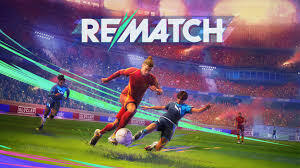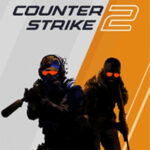Popular Now
Introduction
The concept of a Rematch is widely found in competitive games, sports, and digital gaming contexts. A rematch offers a second chance to outperform an opponent, learn from mistakes, and demonstrate growth. This guide delves into how you can maximize success in a rematch—whether you're playing chess, video games, or any duel-based contest. We'll break down tips and strategies before the rematch, during the match, and afterward, helping you build both mental and tactical edges. Structurally, the article walks through ten essential phases—from preparations to post‑match reflection—so you can comprehensively level up your skills.1. Understanding the Previous Match
Before scheduling a rematch, it's critical to review what happened. Examine your last game's key moments: where you lost momentum, tactical missteps, composure breakdowns, or strategic miscalculations. Use tools like replay analysis (in esports or digital games), video recordings (in sports), or score tracking (in board games) to reconstruct important turning points. Objectively pinpoint weaknesses and successful patterns—you want to replicate positives and eliminate errors.
What to Look For
-
Check unforced errors or avoidable mistakes
-
Identify strategic shifts by your opponent
-
Notice mental lapses or clutch failures
Relevance
This understanding forms the bedrock of your improvement strategy. Without knowing your flaws, preparation will be shallow and unfocused.2. Setting Clear Objectives
Once you've analyzed the previous contest, define explicit goals for the rematch. These could be process‑focused (e.g. reduce errors), performance‑focused (e.g. increase accuracy), or outcome‑focused (e.g. win by +2 games). Set SMART goals: Specific, Measurable, Achievable, Relevant, Time‑bound. For example: "Increase my combo success rate to 80% within first two rounds," or "Win at least two map rounds in the first half."Why Objectives Matter
Clear objectives provide motivation, structure your preparation, and give checkpoints during play. Without them, improvement is vague and directionless.Objective Types
-
Process goals: actions or execution steps
-
Performance goals: measurable in‑game metrics
-
Outcome goals: final result you aim for
3. Mental Preparation & Mindset
The psychological side of a rematch is huge: nerves, overconfidence, or excess pressure can undermine performance. This phase focuses on mindset training. Use techniques such as visualization, self‑talk, and mindfulness. Picture yourself executing flawlessly; rehearse mentally scenarios where you recover from setbacks; reinforce confidence from past wins.Techniques to Build Mental Toughness
-
Breathing exercises: calm nerves pre‑round
-
Positive affirmations: reinforce belief
-
Visualization drills: imagine scenarios and success
Routine Development
Establish a consistent pre‑game routine—warmups, stretches, focus drills. This ritual helps signal to your brain “it’s game time,” stabilizing mental readiness.4. Physical Warm-Up & Energy Management
Especially in esports or physical sports, your body plays a massive role. Fatigue, poor posture, or dehydration can cost critical rounds. Plan physical warm‑ups: light cardio, stretching, hydration, proper nutrition. For game players, knock out some reflex exercises; for athletes, practice sport‑specific drills.Hydration & Fuel
Drink water or electrolytes. Avoid heavy meals right before the match—opt for balanced carbs and protein 1–2 hours earlier.Rest & Recovery
Ensure you’re well-rested: aim for 7‑9 hours of quality sleep the night before. Short naps (20‑30 minutes) can reset your energy if the match is later in the day.
5. Strategic Planning & Opponent Analysis
Once objectives and mental/physical prep are set, craft your strategic outline. What playstyles or tactics did your opponent favor? Which ones tripped you up? Develop counter‑strategies: chart out your opponent’s likely openings, mid‑game shifts, and finishers. Plan responses or traps to exploit predictable behavior.Dynamic Adaptation
Prepare multiple lines depending on how the opponent deviates. Don’t rely on a single script—you must adapt if they surprise you.Team Coordination (if applicable)
In team-based games, align with your teammates: roles, communication protocols, fallback plans. Ensure clarity in who does what under pressure.6. Practice & Simulation
After planning, you need to rehearse. Enter scrimmages, drills, or practice matches that mimic the upcoming rematch setting. Simulate opponent patterns, timings, and playstyles. Use replay tools or ask friends to emulate their tactics. This helps build muscle memory and real‑time decision instincts.Focused vs. Free Practice
-
Focused drills: work repeatedly on weak spots (e.g. combo execution, opening lines).
-
Full matches: simulate full rematch conditions under pressure.
Feedback Loops
Record practice sessions, review errors, iterate. Use coaching feedback or peer critique to refine mechanics and strategy.7. Final Checklist & Warm‑Up Rehearsal
On match day, go through a checklist to ensure nothing is overlooked: mental readiness, water, snacks, game setup, equipment checks. Do a mini rehearsal of your pre‑match routine: breath control, affirmation, visualization sequences. Keep it tight and familiar to invoke confidence.Equipment & Environment Check
-
Confirm internet latency and setup
-
Test peripherals, chairs, screens, audio
-
Optimize lighting, minimize distractions
Timeline Planning
Schedule timing: when to eat, hydrate, warm‑up, start. Allow buffer time for delays or unforeseen issues.
8. In-Match Execution
Now you're in the rematch. Stick to your process: objectives, strategic plan, communication pattern, mental composure. Track progress against your benchmarks. If performance deviates, trigger adjustment protocols: pause, refocus, use breathing breaks, recalibrate strategy.Adaptive Play
If your opponent changes style mid‑match, pivot accordingly—don’t force a losing script. Go back to basics: safety first, minimize risk.Maintain Composure
-
Use in ‑game mental cues ("reset", "calm", "execute")
-
Call brief pauses if allowed or take deep breaths between rounds
-
Celebrate small wins mentally to anchor confidence
9. Tracking & Mid‑Match Feedback
Between rounds or adaptations, keep a log: what worked, what failed, how the opponent responded. This real‑time insight is gold. Share observations with teammates or coaches succinctly. If something is consistently failing, adjust quickly before it snowballs.Quantitative & Qualitative Tracking
-
Quantitative: error count, win/loss rounds, key metrics
-
Qualitative: tone of your communication, body language, emotional spikes
Micro‑adjustments Loop
Use insights to adjust aim, stance, entry lines, timing. These micro‑tweaks mid-match turn into macro improvements over time.10. Post‑Match Reflection & Growth
Once rematch concludes—win or lose—take time for structured reflection. Return to video/replays or scorecards to review performance. Assess against your original objectives: which were met, which weren’t, and why. Then set next session’s focus aligned with progress and ongoing gaps.Celebrate & Iterate
-
Acknowledge what went well—this reinforces motivation
-
Pinpoint areas to refine for next challenge
Long‑Term Development Plan
Create a schedule of targeted training sessions: mechanics, strategy workshops, mental routines. Use milestones to track cumulative progress.

















